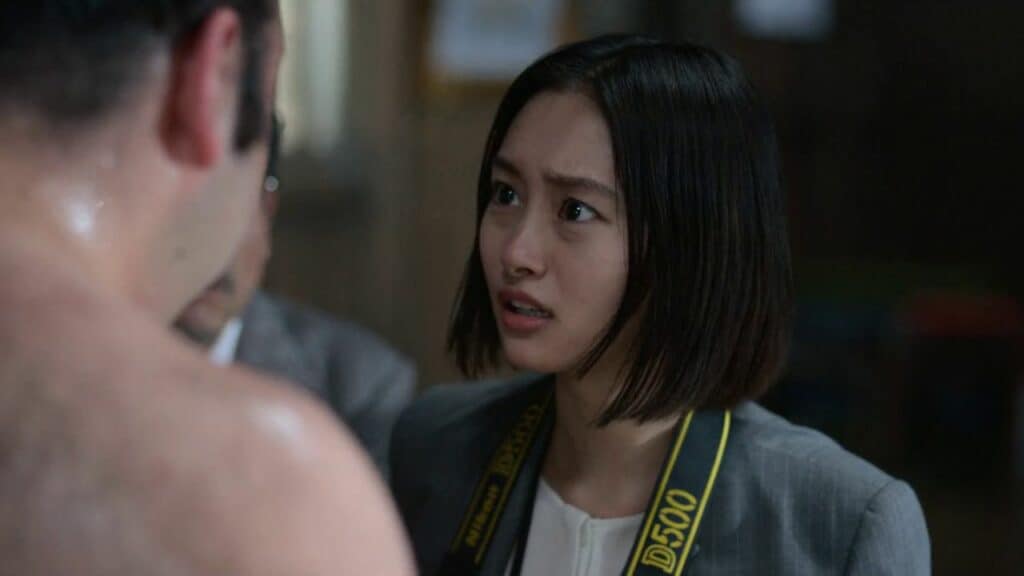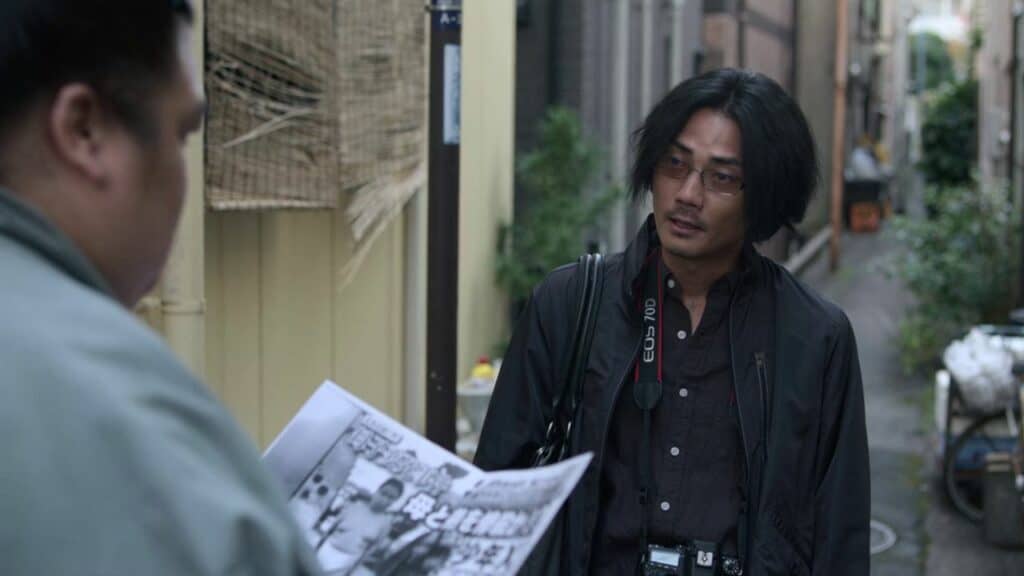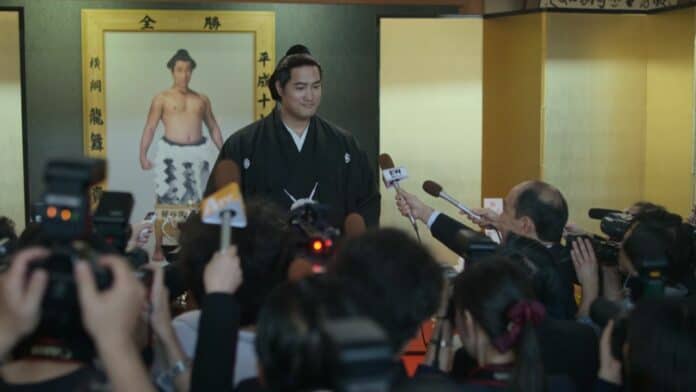Apart from portraying sumo wrestling as a sport that has adhered to its traditions, Sanctuary has attempted to explore some controversial aspects of the sport that have been questioned over the years.
Sumo wrestling is a 1500-year-old sport. The sumo wrestlers sacrifice their lives to reach the top as Yokozuna, the highest rank in the sport. Throughout its history, only 73 wrestlers have so far managed to become Yokozuna.
The life of a sumo wrestler, or rikishi, is highly regimented, with rules regulated by the Japan Sumo Association.
As a strictly regimented sport, over the course of years, many sumo wrestling traditions have been questioned, including sumo wrestlers using the medium of hazing to toughen up their younger prodigies and the way it looks at women, which hasn’t changed even in the 21st century.
As a sumo wrestling drama, Sanctuary sticks to realism and attempts to explore such controversial aspects of the sport.
Women in sumo
In Sanctuary, Kunishima, the new editor working alongside Tukitso to cover Ensho’s stable, is a modern character that dares to question the traditions of the sport.
On her first visit, she gets engrossed in the drama taking place at Ensho’s stable, which makes her stand up and come closer to the sumo wrestlers to capture their pictures.
Kunishima steps inside the dohyo, the ring in which a sumo wrestling bout is contested, infuriating Enga, the fellow wrestler of Ensho’s stable, who disrespects her by calling her a woman.
To this day, in Japan, women are banned from professional sumo. They are not allowed to compete or even touch the dohyo. The sport has been linked to Shinto and Buddhist beliefs, according to which women are considered “impure” because of menstrual blood.

Japan’s first female prefectural governor, Fusae Ota, repeatedly challenged the JSA’s policy to not allow women to enter the ring. As Osaka’s governor, she was to present the Governor’s Prize to the champion of the annual Osaka tournament but had to either present it on a sidewalk or send a male deputy governor instead.
Similarly, in April 2008, in Kyoto, when the 66-year-old mayor of Maizuru city, Ryozo Tatami, collapsed in the middle of dohyo while giving a speech, female medics came to his aid but were ordered by the referee to step out of the ring.
Sanctuary does open up a discussion about women not being allowed to enter the ring through modern characters such as Kunishima and Ryuki-zeki.
Ryuki-zeki, despite being a well-respected Ozeki, is shut down by his father, who is a yokozuna himself, for saying that the sumo world needs to change.
The JSA likes to believe that not allowing women in the ring is a tradition that has existed for centuries, and it would be a dishonor to all of their ancestors to change it. While some justify the JSA for maintaining its traditions in this changing world, others call it problematic.
Still, it’s not like female sumo hasn’t existed at all. Forms of female sumo existed before professional sumo was established. Female sumo became common in the 18th century before facing several bans.
At present, female sumo exists on an amateur level. The International Sumo Federation has contested events where they have allowed women to compete in sumo wrestling matches. The rules are similar to professional sumo, and women wear clothes under mawashi.
Unfortunately, Sanctuary drops this topic later in the show and doesn’t push the discussion around it as Kunishima gets embroiled in Enno’s career.
Hazing
Kunishima also questions Ryuki-zeki about the silent acceptance of hazing as a form of training, which is the very first thing portrayed in the show.
The likes of Enno, who are up-and-coming sumo wrestlers, are looked down upon and bullied at Ensho’s stable by the senior sumo wrestlers. It is considered an act to toughen up the wrestlers.
Stable masters in the sumo wrestling world have been proud of frequently using a shinai to beat the sumo wrestlers of their stable to bring them in line. In Sanctuary, Ensho, as a stable master, never intervenes when young wrestlers like Enno face the wrath of their seniors inside a dohyo.
Ensho allows the disrespect, and instead of teaching the wrestlers politely, he even inflicts damage on them using the same shinai. Ensho never appreciates the wrestlers until they start showing him the results.
This system of hazing received criticism in 2007 when a 17-year-old sumo trainee died after he was beaten with a beer bottle and a metal baseball bat in Inuyama, Aichi Prefecture, Japan. The cause of death was reported to be heart failure, but the autopsy revealed the abuse.
The stablemaster admitted to beating the 17-year-old and instructing the other wrestlers to do so. The stablemaster and the three wrestlers involved in bullying the 17-year-old were later arrested.
Sanctuary addresses hazing when Inushima visits Ensho, forcing him to convince Enno to resign. Okami-san comes to Enno’s aid. She asks Inushima to give Enno a second chance. While doing so, she reminds Inushima of how he once was quite strict with a young wrestler who later suffered from health problems.
Match-fixing
In Sanctuary, when Ensho approaches Enno to lure him into joining his stable, he shares how sumo wrestling promises status, money, power, and women. It is only later that Enno finds out that only high-ranking sumo wrestlers have great advantages when it comes to status and salary.
Due to its hierarchical structure, match-fixing has always been speculated about in the world of sumo wrestling. The JSA always denied these allegations until they were confirmed in 2011.

An investigation into the allegations of baseball gambling by sumo wrestlers revealed text messages that suggested that some of the sumo matches were fixed. The wrestlers involved admitted throwing or fixing bouts, forcing the JSA to cancel the March 2011 tournament in Osaka.
Sanctuary lightly explores the match-fixing part when a news reporter named Yasui asks Shizuuchi to lose to Enno if he doesn’t want the world to know about his dark past.
Yasui made a fierce attempt, but Shizucchi didn’t care if the world found out about what he had done. Shizuuchi goes all out on Enno. He not only wins the match but also destroys Enno.

